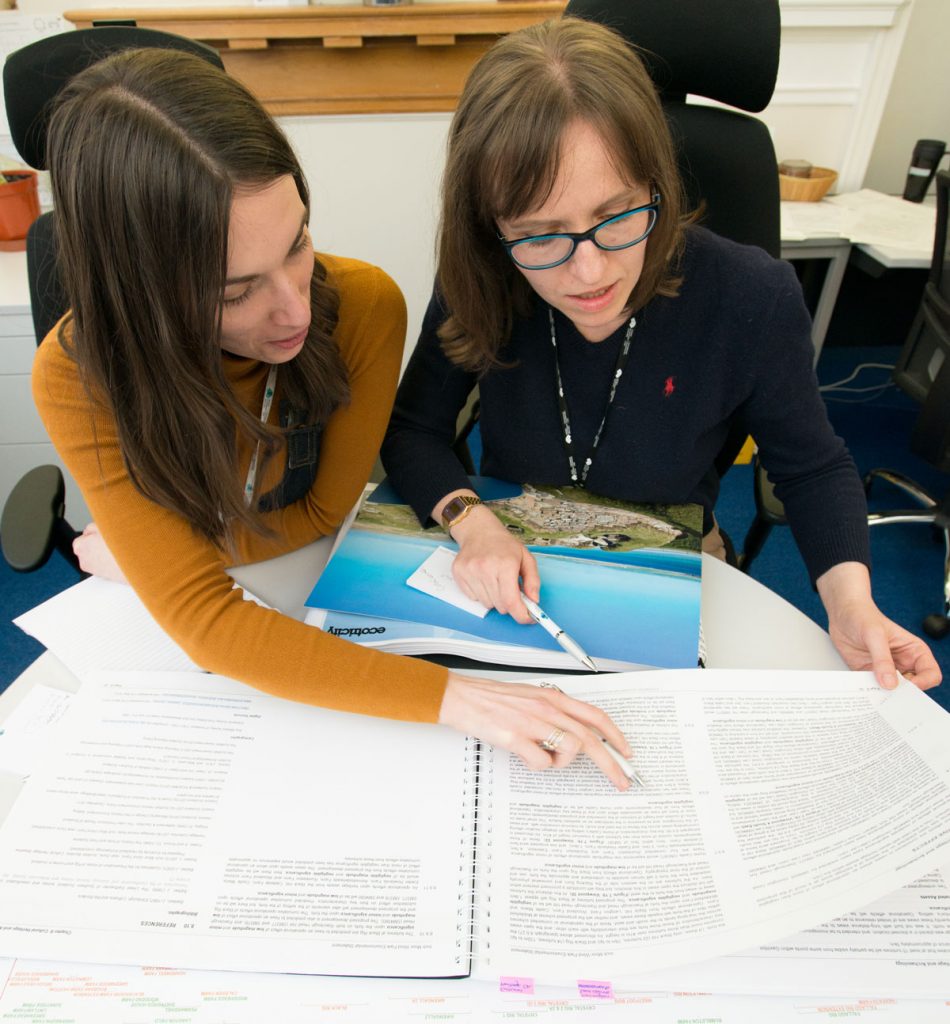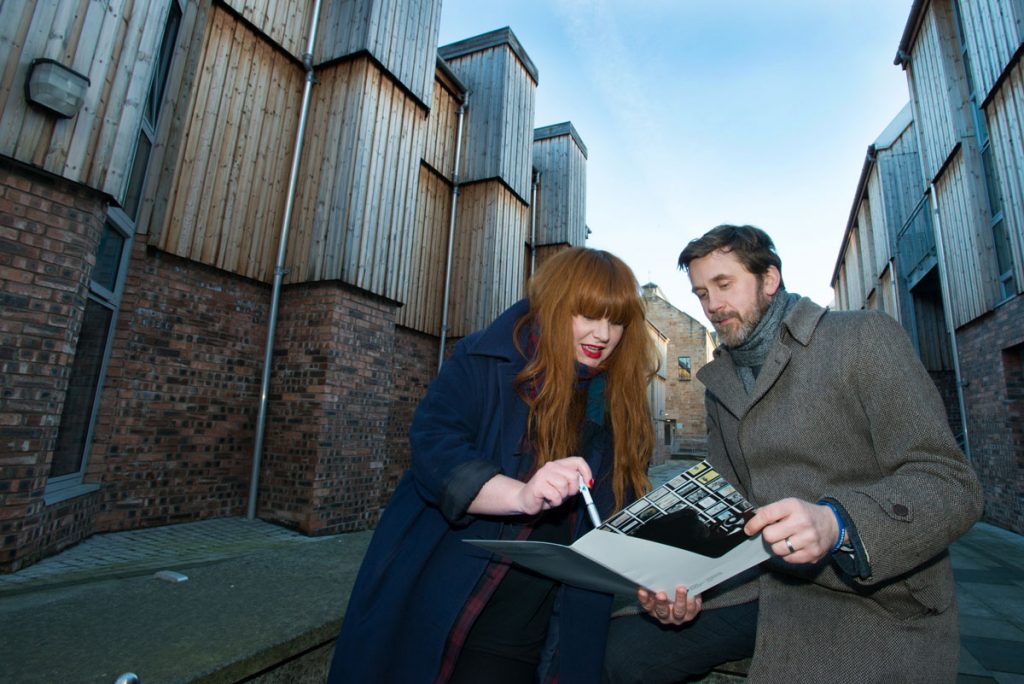
Making the case
Urszula Szupszynska, Senior Casework Officer
Here at HES, we’re asked to give our specialist advice to communities, council planners and businesses on a wide range of issues. This includes shaping policy and legislation, and responding to consultations.
We’re consulted on all sorts of things. On any given day I could be advising on:
- a proposal to build a large housing development near a castle
- the demolition of a disused mill
- an extension to your listed building
- a wind farm proposal
If you send us a request for advice, the first port of call will be our Casework Team.

Senior Casework Officer Urszula Szupszynska (right) discussing our response on a proposal for a windfarm.
Every person in our Casework Team has specialist knowledge on a different area. From architectural history and archaeology to planning and environmental assessments, we cover all aspects of the historic environment.
We usually have an enabling role, advising the decision makers – usually council planners – rather than making the decisions to grant or refuse a planning application ourselves.
While the consultations we receive are varied, the aim of our advice is always the same. We want to support good decision making and see high quality developments that respect and sensitively respond to the historic environment.

Understanding our historic environment
Rosanne Watts, Senior Designations Officer
I’m part of the Designations Team. Our role is to understand which of Scotland’s buildings, monuments, marine heritage and landscapes are the best examples of their kind.
We decide which of these should be legally recognised with designated status like listing or scheduling. Ultimately, this influences the advice we give to decision makers in a planning context.
Want to know which places are legally recognised? We record them all in the Heritage Portal. We have around 55,000 records, covering everything from listed buildings to battlefields.
Our team’s biggest job is maintaining these records. Did you know anyone can propose a monument for scheduling or a nominate a building for listing? You can even ask for a review of a designation.
Our work often involves visiting the site in person as well as desk based research like visiting libraries and exploring the HES Archives. We also spend a lot of time talking to people – consulting with owners and local authorities on any new designation or a legal change to an existing designation.
We’re proud of the Heritage Portal because as well as collecting valuable information to help us make good decisions, it’s an accessible record. Anyone in the world can use it to get a better understanding of the huge value of Scotland’s history and heritage.

Giving good advice
Lila Angelaka, Casework Officer
I mainly deal with consultations affecting listed buildings and conservation areas.
When I receive a consultation on a planning application, my job is to make sure we come to a well-informed view on the proposals. I start by researching the history of a site using our Heritage Portal and other sources.
Like the Designations Team, I might then look through historic records and photographic archives, as well as visiting the site in person. This helps me better understand the place and why it’s important.
To get the best and most balanced understanding of a proposal, we’ll often meet the people behind the proposal. This means we’ll discuss the development with the applicant, the planning officer and other interested parties.
Once we’re confident we have all the right information on the place and its context, and the scope of works being proposed, we can assess how the proposal would affect the historical environment in question.
This might not be tangible. It can be visual or physical, but it may also affect how we experience and understand a building and its setting.

Making a site visit is one of the best ways to understand the potential impact of planning proposals our historic environment.
We also look at conservation benefits and community needs.
We’ll then issue our response to the local authority. We’ll give our view of a scheme, and advise on best conservation practices. Our responses are usually published on the planning authority’s websites or, for nationwide policy consultations, on our own website.
What next?
The authorities take our advice into account when they decide whether to approve or refuse an application. They do this in line with local and national policy and guidance, like our Managing Change in the Historic Environment publications.
Want to know more about our role? Try our latest Planning Performance Report 2017-18.

